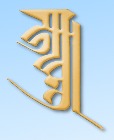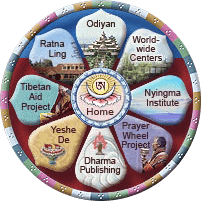
"Kum Nye heals both our bodies and minds, bringing the energies together to function calmly and smoothly."
Linie

Kum Nye este comoara noastră cea mare, un drept care trebuie cultivat şi întrupat,o moştenire care trebuie reînsufleţită şi exprimată prin atitudinea şi faptele noastre. Din cauza cunoaşterii prezervate în interiorul Kum Nye, Buddha este un simbol a păcii universale, iar Dharma este un simbol al tămăduirii şi transformării. Nu putem lăsa să moară această cunoastere.
Sistemul Kum Nye pe care îl prezentăm este în cu totul modern, extras din înstruirea şi experienţa personală a lui Tarthang Tulku şi prezentat şi introdus Occidentului prin publicarea cărţilor “Relaxarea Kum Nye”, volumul I şi II (Dharma Publishing, 1978) şi “Bucuria de a fi – Practici avansate Kum Nye pentru relaxare, integrare şi concentrare” (Dharma Publishing, 2005)

About Tarthang Tulku Rinpoche
Tarthang Tulku Rinpoche is originally from Eastern Tibet. Also known as Rinpoche (meaning 'precious teacher'), he received traditional training from the great masters of his time in the Nyingma school of Tibetan Buddhism.
Tarthang Tulku left Tibet in 1959 after the disruption of his culture. From 1959 to 1967, he taught Buddhism at Sanskrit University in India. In 1968, Rinpoche came to the United States where he has lived and worked continuously. To support Tibetan refugees, preserve Tibetan culture and make the teaching of Buddhism accessible to Western students, Rinpoche initiated many projects and established over 20 organizations including the Nyingma Institute, Tibetan Aid Project, Dharma Publishing, the Yeshe De text preservation project, and the international Nyingma Centers.
Rinpoche is a visionary thinker who has authored eighteen books that expand understanding of the human heart and mind.

 Yoga Tibetană
Yoga Tibetană